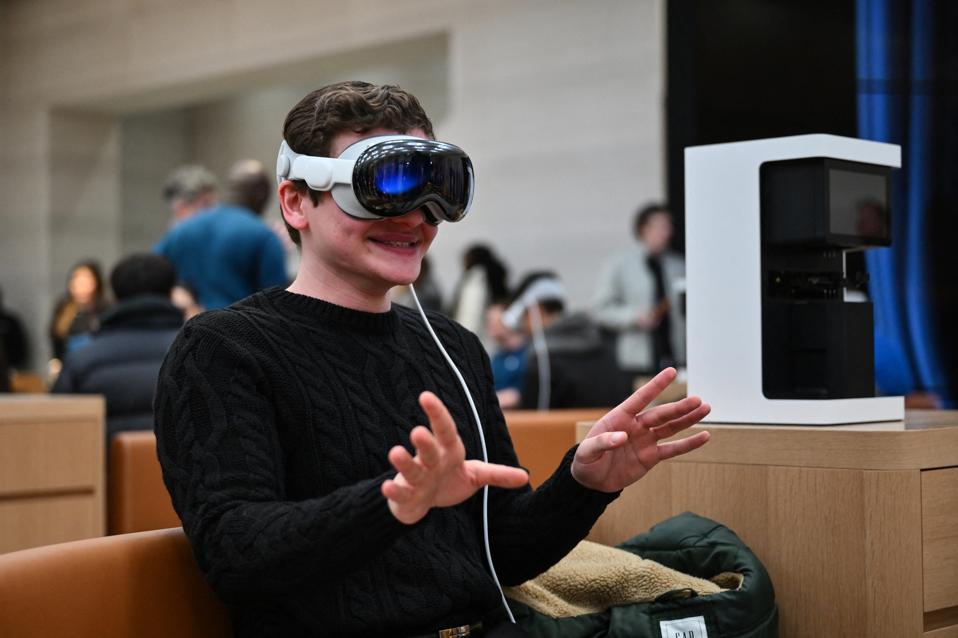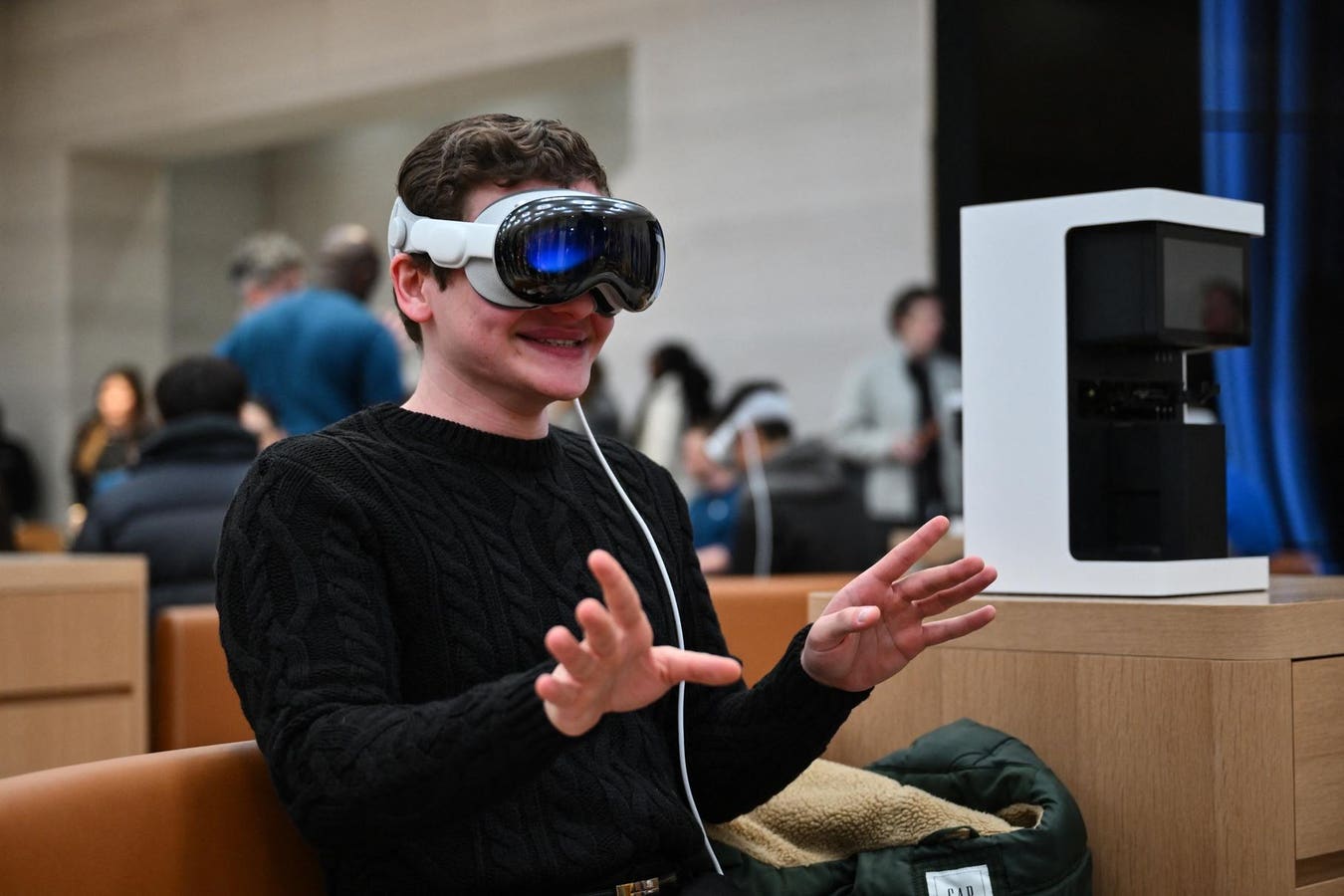
VR headsets will maintain a unique place in the XR/AR genre but smart glasses may rule the overall … More market. (Photo by ANGELA WEISS/AFP via Getty Images)
AFP via Getty Images
I recently wrote a article in which I stated that smart glasses could become the next significant personal computing market and that they were set to become the third major computing platform, following PCs and smartphones.
“Smart glasses are beginning to evolve into a new computing platform, albeit a wearable one. If history is our guide, it should follow the same pattern and trajectory as the PC and smartphones. With all computers, past and present, they start at a hardware level, tied to an OS and some form of SDK to develop apps for these computers.”
After I wrote this, I had some folks ask what role VR headsets and goggles will play in the future if smart glasses become the dominant way people use XR and AR applications eventually. Up to now, they have been the purveyors of most of the VR and XR applications with which most people are familiar.
The good news is that VR headsets—and those with pass-through capabilities for AR-like functionality—aren’t going away. However, their current designs and form factors aren’t suited for all-day wear or true mobile XR/AR use, so they will likely remain limited to specific, task-focused applications.
The most dominant VR headsets and goggles will continue to be for gaming and total VR immersive experiences that smart glasses cannot deliver. Products like Apple’s Vision Pro and Meta’s Quest are the best examples of VR headsets designed for these purposes.
However, VR headsets and goggles will also become important in business and enterprise applications. The U.S. military already employs various forms of VR headsets for battlefield use as well as specialized training. Enterprises will continue to utilize them for training, design, simulations, and multiple types of customer service solutions.
If one examines the differences between VR headsets, goggles, and smart glasses more closely, it becomes easier to see how the optimization for each form factor delivers distinct experiences.
1. Purpose and Experience
VR Headsets:
- Designed to create a fully immersive virtual environment. When worn, VR headsets block out the real world and transport the user into a simulated 3D space, ideal for gaming, simulations, and virtual meetings.
Smart Glasses:
- Overlay digital information onto the real world, enhancing—not replacing—your natural surroundings. They focus on convenience, quick access to information, and subtle digital integration for daily tasks.
2. Design and Comfort
VR Headsets
- Size & Weight: Bulky, heavier, covers the eyes.
- Less suitable for all-day use
- Tech-focused, less discreet
- Prioritize immersion and often require secure strapping to the head.
Smart Glasses
- Lightweight, slim, resemble eye-wear
- Ergonomic, comfortable long-term
- Often stylish, blends with outfits
- Designed for portability and daily wear
3. Level of Immersion
VR Headsets:
- Offer complete immersion by blocking out external visuals and sounds, relying on high-resolution displays, spatial audio, and motion tracking to create a lifelike virtual world.
Smart Glasses:
- Provide minimal immersion; digital content is overlaid in the real world, allowing users to remain aware of their surroundings at all times.
4. Key Features
VR Headsets:
- High-resolution stereoscopic displays
- Full motion and head tracking
- Spatial audio
- Hand controllers or gesture-tracking
- Used for gaming, simulations, training, and virtual collaboration
Smart Glasses:
- Transparent or semi-transparent displays for AR overlays
- Hands-free notifications, calls, and navigation
- Voice assistant integration
- Cameras for photos, videos, and AR applications
- Fitness and health tracking
- Real-time translation and navigation
5. Use Cases
VR Headsets:
- Best for entertainment, training, education, design, and any application requiring full immersion in a virtual environment.
Smart Glasses:
- Ideal for productivity, navigation, fitness, real-time information, and hands-free communication in daily life and work.
6. Price and Accessibility
VR Headsets:
- Generally more expensive due to advanced hardware and immersive capabilities.
Smart Glasses:
- More affordable and accessible, with models ranging from basic notification devices to advanced AR-enabled glasses.
I also received some comments that are skeptical about smart glasses ever having mass adoption. It is a genuine concern, and as I stated in the recent article mentioned above, there are numerous challenges in making smart glasses the actual next personal computer for the masses.
Suppose the technical issues are resolved, and software developers embrace these new face-worn hardware and software products. In that case, history suggests the market will follow a familiar pattern of development and adoption. Smart glasses could become the dominant way most people experience some forms of XR and nearly all AR applications by the end of this decade.
Disclosure: Apple subscribes to Creative Strategies research reports along with many other high tech companies around the world.
